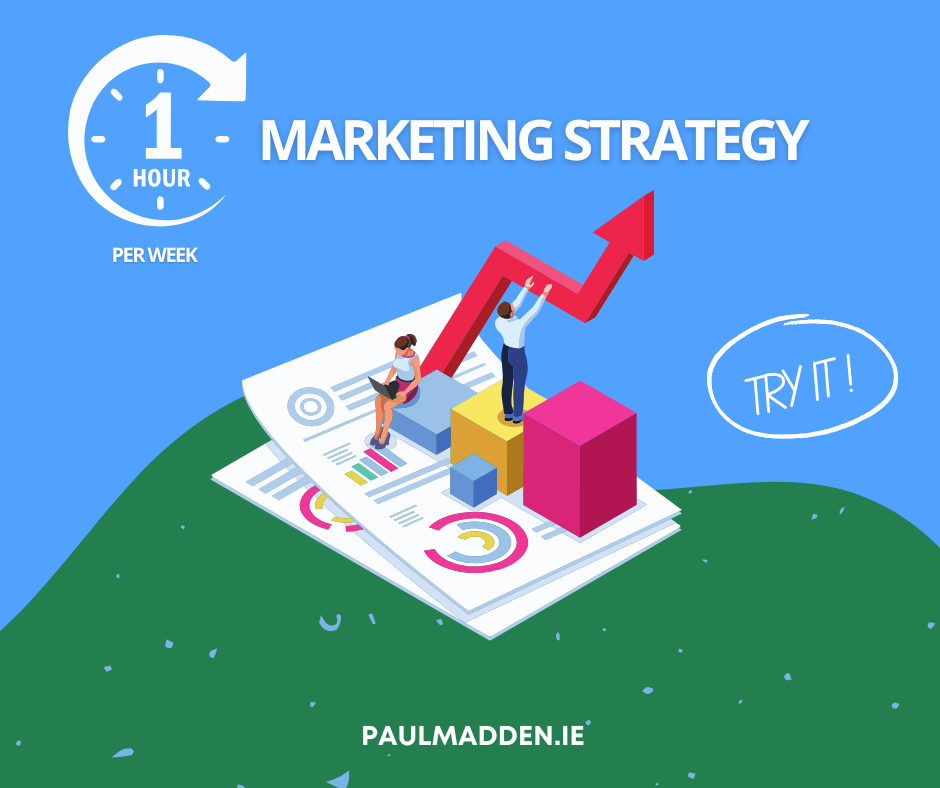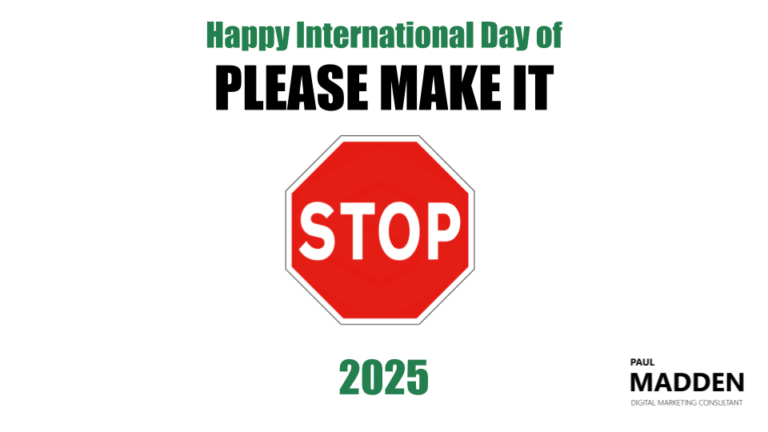
Marketing is often misunderstood as some form of cryptic code that unlocks business growth or a momentary spark of genius that causes an avalanche of sales opportunities. If only it were that simple!? Even from years of interviewing many marketing graduates who learn the theory of marketing, there tends to be a common misunderstanding of sorts — a heavily skewed focus on the creative aspects of the role. Creativity is important, but I’d estimate it to represent no more than 30% of the role of marketing. The rest? It’s a process of research, planning, trial and error, post mortems and dogged perseverance.
So if marketing is 70% process, surely anyone can learn the process and get 70% of the way there with a bit of elbow grease? I believe so. If as a small business owner, you can dedicate 1 hour per week to sales & marketing strategy, you can iteratively improve your business performance. Just one hour per week is far from ideal, but it’s a start. The more time you can dedicate, the better off you will be but starting small is better than not starting at all.
This is the second in a series of articles showing how you can progress your sales and marketing effort in just one hour of focused time per week. The series is aimed at people who own or manage their own business and want to maximise the return on investment in their sales, marketing and operational spend — solo entrepreneurs, founders etc. working across retail, services, hospitality, trades, agri-business, wellness, creative industries, tourism etc.
If you’re starting a marketing strategy with just one hour per week, keep it simple — start with just one goal. Adding too many goals too early brings complexity, which causes distraction and disrupts the focus. Set one goal, work towards hitting that goal, learn from what went right/wrong and start again with a new goal. A few ideas to get started:
The right goal will depend on your context. Set the right goal for your business and work on hitting it.
For big businesses, customer profiles are a significant investment. Big brands have data teams and customer panels and use 3rd party data and first-hand research to truly understand their customers. You don’t have that luxury but you (probably) speak directly to your customers. You know them by name and you can see their pain points. Make this relationship work for building new business opportunities.
Dedicate one hour to documenting the challenges of your customers, read online reviews of competitors and look at Google Search Console data to see what search terms draw people to your website.
This forms the basis for lean customer personas which remove some of the guess work from trying to reach them with your marketing campaigns. Personas are repeatable profiles of would-be customers — ballpark estimations of what your next customer will look like based on existing customer data.
If you’ve done Part 2 well, Part 3 is a little bit easier but the most important thing to remember is that you can’t “be everywhere” at once. This is often where solo marketing strategies just fade away and die. There are many common misconceptions about marketing and “we tried that and it didn’t work” is usually the first nail in the coffin.
Aim to identify one platform where your target customer is most active and where you can prove your value proposition. Expanding to other channels later is easier when you have a little more money in the bank, know-how and hopefully a bit more time.
Focus on where your target audience spends its time online e.g. ~ 72% of TikTok users in Ireland are between 18-34 years old (55% female users) whereas for Instagram, 52% are under 34 years old (58% female). Facebook has the broadest reach with 18% of users over the age of 55. Maybe your target market are not social media users at all? Wouldn’t that be something!
Most content marketing across the internet is repetitive drivel that has been done to death. Instead of joining in and repeatedly flogging a dead horse, think about the persona you created in Part 2. What can you provide in content terms that is actually useful and shareable. (Useful enough for them to come back for more, shareable enough to get you some more leads.)
Quality is far more important the quantity. Please, global marketers, stop posting stuff about the “International Day of [Insert Buzzword Here]” unless it has huge relevance to your business. Mankind has surely reached its limit for such tenuous stretches for relevance.

If you know your customer on any level, you probably have some idea which ‘International Day of…’ will resonate. That number isn’t 365.
How your content represents value to your target audience will determine the longevity of your content marketing strategy. If it’s of value, people will keep coming back for more. From there, it’s a case of ensuring that your marketing effort is aligned to your sales pipeline.
Starting out, there’s a chance the first 10 marketing campaigns you run will fall flat on their face. So fail fast and learn. You don’t have the resources for a layered 6-month marketing campaign with complex segmentation and retargeting rules. You need to think about what a bare bones campaign looks like, then try it and learn, repeat what works and bin what doesn’t (or your gut instinct may say shelve it for later!)
Here are the basic nuts and bolts of what you need:
Keep it simple. Automated marketing is important for scalability but you should only automate what works. Introducing automation when you don’t know what you’re automating is a recipe for disaster. If your first attempt fails, GOOD! Welcome to the marketing profession. The next trick is to source where it’s not working — is it the hook, the capture, the conversion path or the nurture? The data should give you some clues. (See Part 6 below)
“Data, data, data. I can’t make bricks without clay!” said Sherlock Holmes (The Adventure of the Copper Beeches).
Measuring effectiveness ultimately comes down to one simple metric — revenue growth. Everything else is either a proxy measure, or meaningless bullshit. Indicators of success are the cost per lead of your marketing effort, your conversion rate, email open and click trends (getting better or worse) and ROAS (return on ad spend). Don’t get fixated on individual metrics but track performance week-to-week (even in a spreadsheet to start). Learning what works tends to be an iterative process but if you see something wrong, adjust; if something is working, do more of the same. Speed is your advantage, being nimble and able to call a halt when something goes wrong is important. You don’t need to cling to what’s working when you start small and iterate.
Many small businesses only start to think “let’s try some advertising” when the sales opportunities start to dry up. Advertising can work alone, at least for a while but it can also be the most cash-evaporating part of marketing. And it’s still only a part of the picture.
The best approach is to be consistent. Even 1 focused hour per week is a start. Be prepared to learn and responsive to changes in customer needs, behaviours, competitive forces or data insights that can change your direction. It doesn’t need to be expensive to see a positive return on your marketing spend and once you start to see a return, it gets easier and you can make bigger budget decisions with greater confidence.
To provide the best experiences, we use cookies to store and/or access device information. Consenting to cookies will allow us to process data such as browsing behaviour or unique IDs on this site. Not consenting or withdrawing consent, may adversely affect certain features and functions.